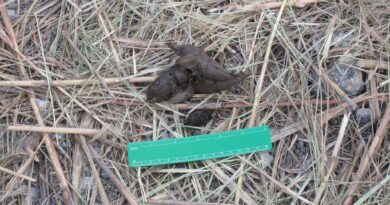Armadillo
The greatest obstacle for any animal , including the armadillo, is avoiding becoming a tasty dinner.. There will always be hungry predators on the hunt wherever it lives, and it must have some type of defence against them. The solution for some animals is to conceal so that they are not observed.
Others are leaving quickly in order to avoid being caught. Others will fight back with razor-sharp spines, ferocious teeth, or lethal poison. There is a fourth basic defence in addition to these three: armour.
Many animals may protect themselves by putting on a hard outer shell that resembles knight’s armour. This is how armadillos, a fascinating group of South American animals, protect themselves.
The armadillo’s bone shell is so robust that only a few murderers can crack it with their teeth. Even the most powerful of these South American flesh-eaters prefer to have their nightly meal elsewhere. This may appear to be the ideal choice for an animal seeking a safe and uncomplicated way of life. Being armoured, however, has one major disadvantage. The body stiffens and becomes hard. The movements are slow and inconvenient. This distinguishes the strongly armoured animals from other creatures.
Soft-furred animals can be sporty in whatever they do because of their marvellously fluid motions. Natural disasters such as forest fires and floods are easier for them to escape. When food runs out, they can move to new homes more quickly. They have no trouble climbing, leaping, gliding, or flying. The armoured animal, on the other hand, must make due with a clunky existence. It gives up body freedom in exchange for body protection.
What is the armadillo’s solution to this problem? One strategy is to loosen up. Without sacrificing the hard shell’s protection, the animal can become more agile by wearing jointed armour that allows it to bend its body somewhat. The armadillo accomplishes this by having multiple hinges, or bands, running along the middle of its body. It can roll itself up or flatten itself out by opening and closing them.
This armour style makes them appear to be mechanical toys. You want to wind up an armadillo with a key and watch it run the first time you see one.
The amount of hinges, or bands, on different armadillos varies. Some of them, such as the three-banded, six-banded, and nine-banded armadillos, are called after their bands.
The small armadillos can sprint fairly well on their short legs because they can bend their shells with these hinges. They’ll never be able to escape fast enough to get away from a fast hunter, but if they can hear problems coming from a long way away, they’ll at least have time to take cover. Their hardiness offers them the advantage of being able to push through prickly, scratchy bushes and plants without being damaged once they’re in the undergrowth. The killer on their tail may think twice about pursuing them.
The retreating armadillos scamper away, heading for the safety of their burrows. They will dig digging on the spot if there is no burrow nearby. They continue digging with their front feet, kicking the ground backwards behind them, until they are totally buried beneath the surface, or until only the hard, bony shells of their backs can be seen. They then take a breather and wait for the threat to pass.
It is tough to extricate them if they are found half-buried. They jam as hard as they can while keeping motionless. The hunter can only view their back, which is smooth, hard, and rounded. No matter how wide the ravenous jaws open, there’s nothing to hold on to.
They must rely exclusively on their armour to save them if their opponent approaches them before they can dig in. Even without digging into the ground, some armadillo species may curl up into such a tight ball that all of their soft parts are totally hidden from view. When assaulted, the three-banded armadillo may transform into an almost perfect sphere. It folds its shell around itself and plugs the space where the two ends meet with its head and tail, giving it the appearance of a huge woodlouse. Only the tops of its head and tail are visible, and both are protected by a thick plate of armour.
Because no killer can get their jaws around the bony ball, this appears to be the ideal technique for an armadillo to protect itself. Their teeth keep slipping off the rough surface no matter how hard they bite. They eventually give up and leave in search of a less difficult prey. The small armadillo uncurls itself, looks around, and then scurries off to safety after a long wait, making sure that all is calm at last. However, there have been times when this form of self-defense has failed miserably. A human hunter was out wandering along a path on a mountainside in South America on one occasion.
Higher up the hill, a family of three-banded armadillos was trotting silently in his way. They all quickly curled up into tight balls when they saw the hunter. Because of the hill’s slope, they rolled down and down until they came to rest at the hunter’s feet on the path. He quickly bent down, grabbed them up, stuffed them into his collecting bag, and continued on his way with the day’s easiest catch. If an armadillo comes across a body of water, it may be in trouble. Its armour makes it incredibly heavy for its small size, and it must protect itself from sinking if it wants to swim. This is something that one type of armadillo is known to perform exceptionally well. It takes a deep body and fills its lungs with air before entering the water.
You could argue that this is no different than a human swimmer taking a big breath before diving into a pool, but there is a distinction. Not only does the armadillo fill its lungs with air, but it also fills its stomach and intestines. This causes it to float like a balloon, allowing it to swim safely on the water’s surface. The armadillo must, of course, hold its breath in order to move through the water in this manner. It would sink like a stone if it let forth a breath. As a result, it is unable to swim for long periods of time. However, this odd animal has another surprise in store for us: it can hold its breath for up to six minutes. It will have enough time to traverse a river or swim to safety.
When it feeds, it does the same breath-holding manoeuvre. It eats practically any little animal that lives in the earth, particularly insects. It can detect the presence of its prey down to a depth of 20 cm via its sense of smell. Scratching madly with its front feet, it keeps its nose buried in the dirt, hoping to find anything hidden there. It must again hold its breath for long periods of time in order to avoid choking on a cloud of dust during its search for food.
In the South today, there are twenty species of armadillos. They range in size from the imposing gigantic armadillo, which is just over a metre long, to the diminutive fairy armadillo, which is only 12 centimetres long.
The nine-banded armadillo, which may be found as far south as Argentina and as far north as Central America, is the most successful. It even spreads to the southern United States, where a huge number of people are killed on the roads late at night. Because it kills so many insect pests, local farmers regard it as a friend, and it is normally left alone. It has even been intentionally introduced as a natural pest in some sections of Florida and other southern states. Controller The fact that the nine-banded armadillo always gives birth to quadruplets is one of the oddest facts about it. A female produces either four identical young males or four identical little females every time she becomes a mother. No man or female has ever had a sister, and no woman has ever had a brother.
Some other armadillo species are known to have quads, but one species goes even farther, producing eight or even twelve kids in a single litter, all of whom are of the same gender.
The most shocking truth of all, however, is that some of our present armadillos’ prehistoric progenitors were as large as rhinoceroses. Their shells were so enormous that they were utilised as roofs for the first human homes on the American continent. A single shell might reach more than 3 metres long, dwarfing today’s “giant” armadillo. It supplied a ready-made cover for the early Indians’ crude dwellings after being scooped out, dried, and turned upside down.
Although today’s armadillos are far too little to be used in hut construction, armadillo bowls and baskets are nevertheless popular in some areas. These are created from their dried shells, with the head and tail tied together to form a handle. Their shells are also employed as sound boxes for native musical instruments in some parts of South America. This implies that many of these adorable creatures are killed in order to make from tourists looking for unique items in the area. This appears to be an unjust fate for such pest-eating animals.



